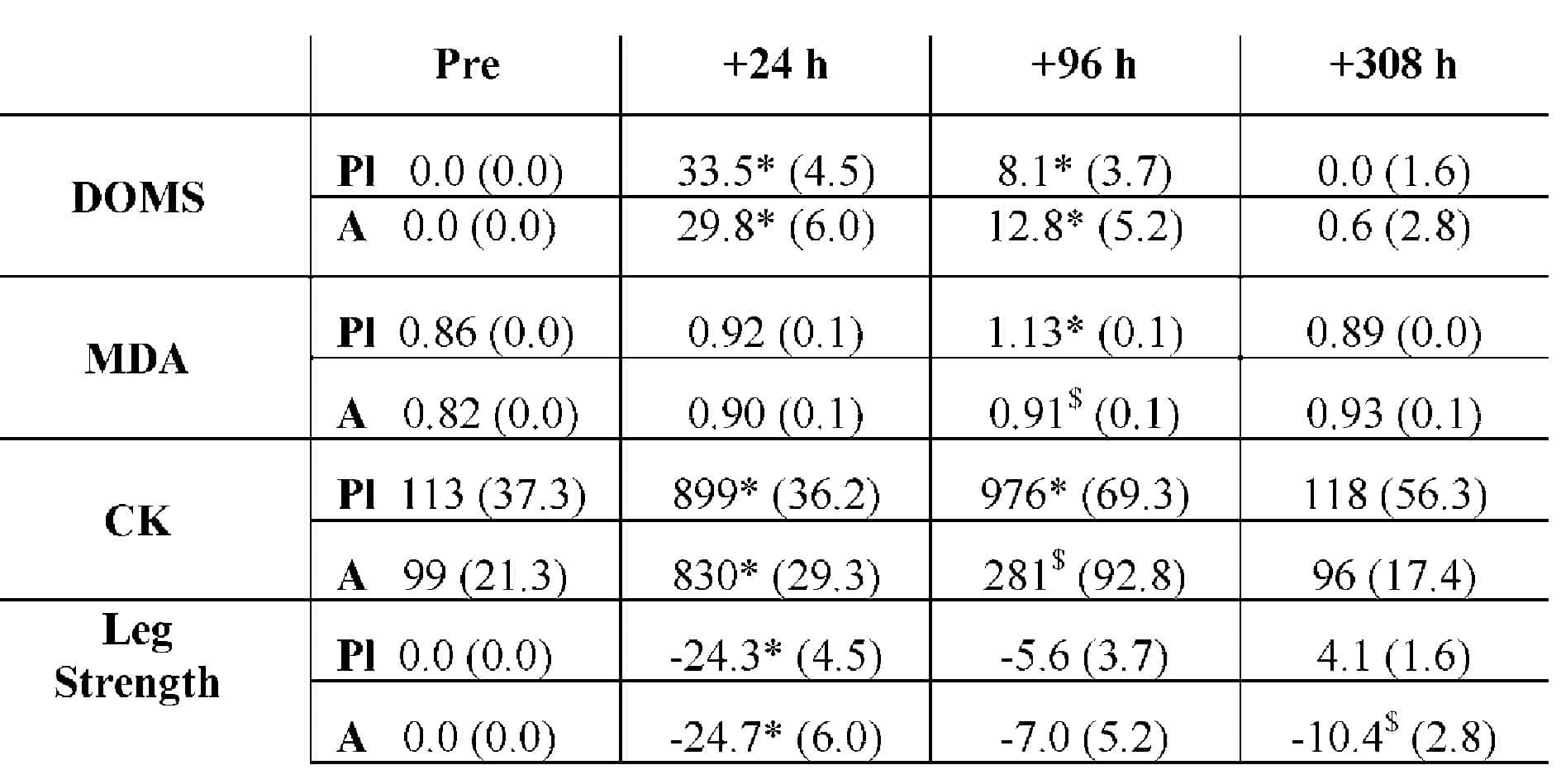Exercise involving lengthening muscle actions results in delayed onset muscle soreness (DOMS) which may be attributable to oxidative stress (OxS). Although exercise causes oxidant stress any link between OxS and DOMS remains equivocal. Ascorbic acid (AA) is a dietary antioxidant and a powerful inhibitor of lipid peroxidation. Given the antioxidant properties of AA, the aim of this study was to investigate the effects of AA supplementation on DOMS, muscle function and lipid peroxidation following downhill running.
In a double blind placebo controlled study, twenty male subjects were randomly assigned to two groups. Group A received 1 g of ascorbate 2 h pre and for 14-days post exercise, whilst group Pl received a placebo. Exercise involved running downhill on a motorised treadmill for 30-minutes at 60 % Î{special}J{special}max. Venous blood samples were drawn pre and 2 h post-supplement, immediately post-exercise, and then 24, 96, and 308 h post-exercise for the analysis of creatine kinase (CK) using enzymatic methods, plasma ascorbate and malonaldehyde (MDA) using HPLC. DOMS was assessed using a visual analogue scale, whilst muscle function was assessed using an isokinetic dynamometer. Statistical analysis was carried out using a 2-way ANOVA.
AA concentrations were elevated in A compared to Pl (P < 0.05). Downhill running resulted in a significant increase in DOMS (P < 0.05) although there was no difference between the groups (P > 0.05). Muscle function was impaired post exercise in A and Pl (P < 0.05). Both groups exhibited an increase in plasma CK 24 h post-exercise (P < 0.05) whilst Pl exhibited a second peak 96 h post-exercise (P < 0.05). There was no increase in MDA immediately post-exercise in both A and Pl, although Pl exhibited a delayed increase 96 h post-exercise (P < 0.05).
Our data suggest that ascorbate supplementation attenuates MDA production and secondary increases in CK activity following downhill running although it does not reduce DOMS and may affect the recovery of muscle function.
The authors would like to acknowledge Lee Siemesko for assistance with the data collection and Dr Anne McArdle from Liverpool University for useful scientific discussions.

